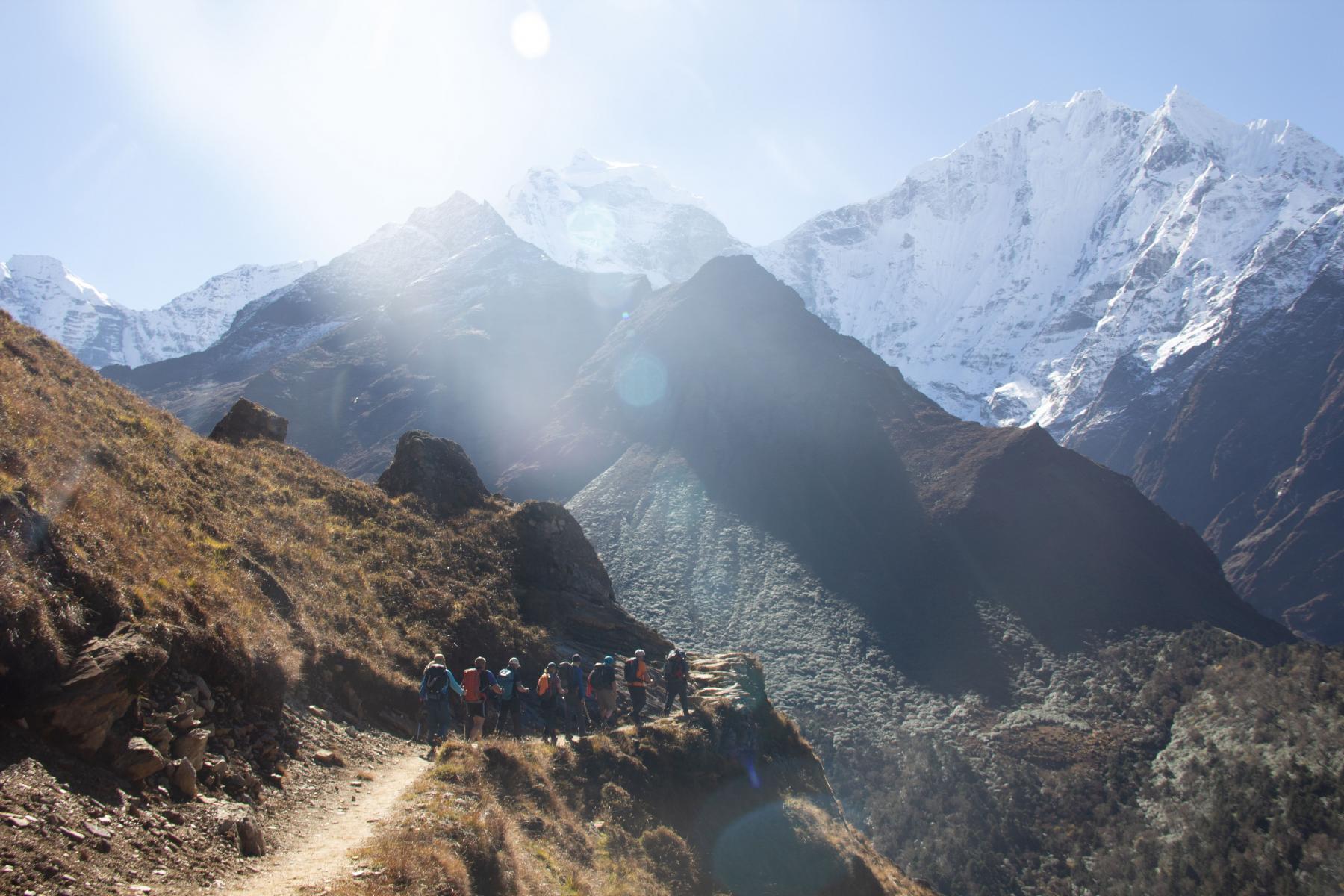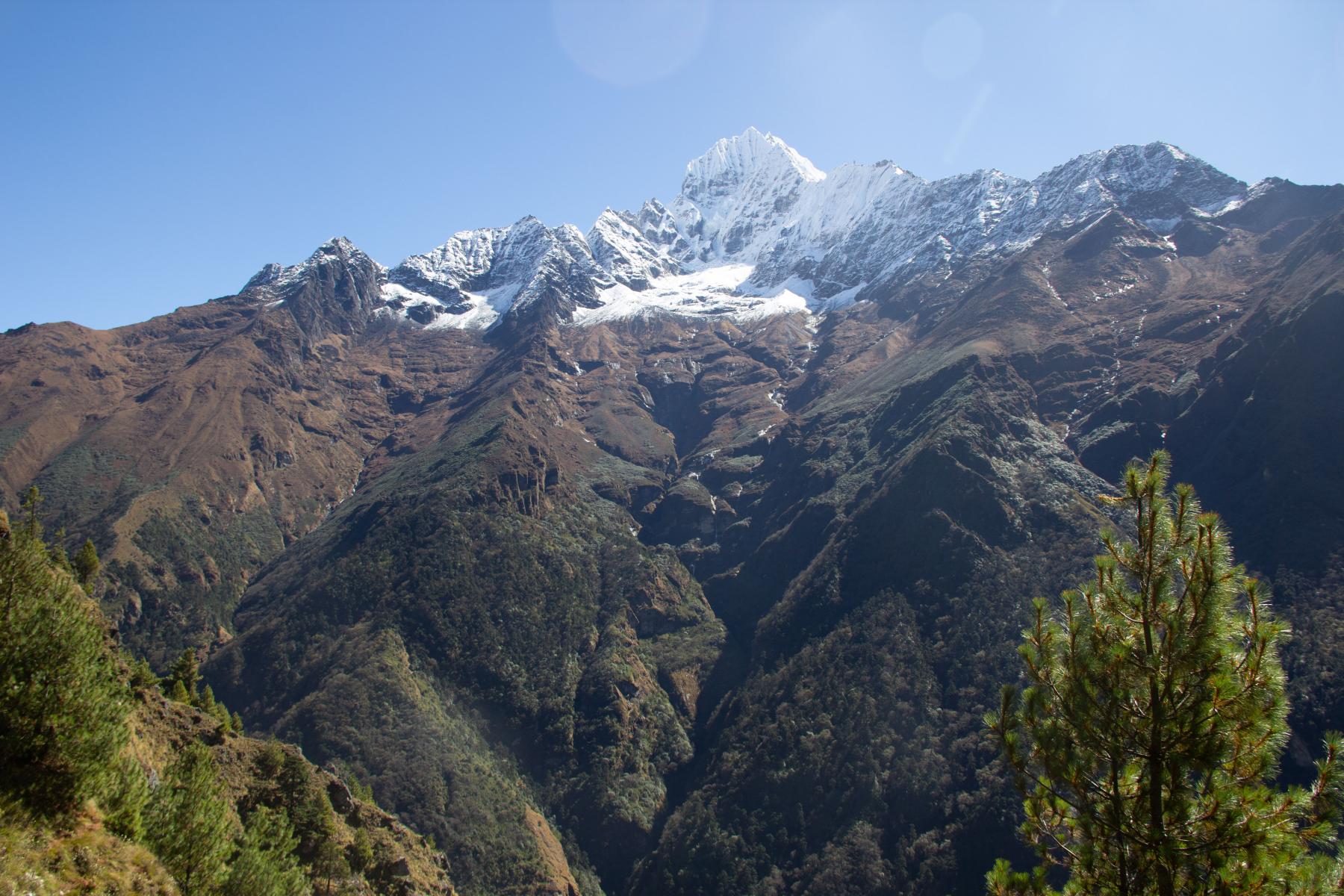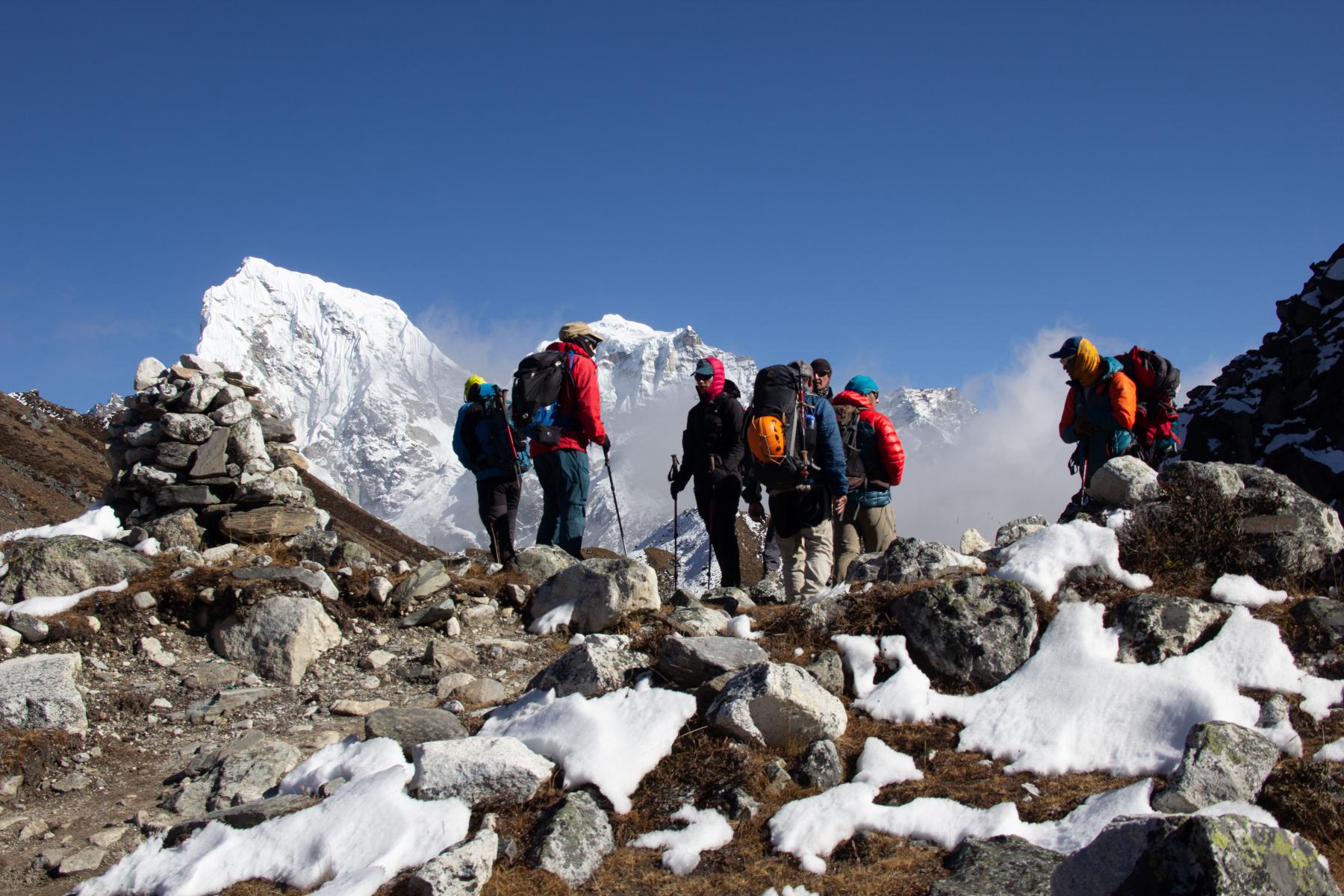
Sarki Sherpa Mountain Leader
Aug 11,2022The Everest Three-Pass Trek
The journey of a thousand miles begins with a single step.
Everest three-pass trek is a trek perfect for adventure lovers. Deemed one of the most challenging treks in the world, this trek is as much rewarding as it is challenging. In this journey of a lifetime, you get to get a closer look at some of the highest mountains in the world. Located in the Everest region of Nepal, the journey begins from Kathmandu to Lukla to the Everest Base Camp. From the Everest Base Camp, you pass through three of the highest passes of the Khumbu region, giving you a better insight into the climate, culture, and geography of the land that these mountains stand in.

An overview of your journey:
Your journey starts with a trip to Kathmandu where you will visit the heritage sites and popular destinations of the capital city. From Kathmandu, you take a flight to Lukla, where the trekking journey officially begins. Lukla is a small town in the Khumbu Pasanglhamu rural municipality of the Solukhumbu District. Then a trek of a few hours takes you to Phakding from where you reach Namche Bazaar. Namche Bazaar is a lively market, a place of great cultural and geographical significance. For properly acclimatizing (slowly allowing the body to adjust to the high altitude and cold climates), a day's rest at the Bazaar is crucial, after which, we trek towards Thame. From Thame, we reach Lungde and begin our trek to the first of the three passes - the Renjo La Pass (5360m). The journey is followed by one of the major attractions of the trek - Gokyo, a pristine glacier lake. After trekking from Gokyo to Dragnag, you reach the second pass- the Cho La Pass (5420m). From there, we ascent towards Dzongla, Lobuche, and Gorak Shap and make our way to the Everest Base Camp (5364m). The mesmerizing views of the mountains from this area are a feast for the eyes. Your journey doesn’t end once you reach the Everest Base Camp. The trek resumes as we move to Kala Patthar (5550m), the highest point of this trek and one major highlight of the entire trek. After enjoying the view from Kala Patthar, we move towards Lobuche and the final pass of the three-pass trek - the Kongma La Pass (5535m). You have completed all three passes of the trek. From here we make our way back to Namche Bazaar, passing through the valleys of Chhukung and Tengboche. From Namche to Lukla, we return to Kathmandu with countless stories and memories in our backpacks.

A wonder of Nature:
In your journey to the three passes, you get to witness some of the most breathtaking views of the mountains. Gokyo valley is a scenic valley in the mountains region with its clear blue waters and ragged mountains; mesmerizing views from the Gokyo Ri and the hustling and bustling streets of the Namche Bazaar. One major attraction of this trek is the Kalapatthar, which provides panoramic views of some of the highest mountains in the world. A unique physical characteristic of the Everest region is its glaciers. As a part of your trek, you get a glimpse at the largest glacier in Nepal - Ngozumpa Glacier as well as the Khumbu glacier. Each part of the trek is a wonder to witness. On you And the colorful valleys and snowcapped mountains are home to many species of animals and plants. Animals like musk deer, colorful pheasants, snow leopards, and the Himalayan Thar strive in these extreme areas. Plants stop growing at altitudes above 5000m +. But below this altitude, a wide range of flora and fauna adorn our journey ahead.

A cultural experience:
The Everest region has been the haven of the Sherpa communities for many years and even now, thousands of Sherpas call the Everest region their home. As you trek your way from Lukla to the Everest Base Camps, you come across many Sherpa valleys beaming with culture and tradition. The Namche Bazaar-the capital of the Sherpa communities is one such place. With renowned hospitality and cheerful faces, Namche Bazaar is a lively market and a popular point on your route to the Everest Base Camp. Here, you get to interact with the Sherpas and their way of living and learn more about how they adapt to their life in the mountains. Similarly, the valleys that you come across on your way-Chukkung valleys, Gokyo valley, and the hidden valley of Nangpa La are also great places to gain deeper insight into the life of the Sherpas. Interacting with the locals, there is always something interesting to learn and you come home with not only experiences but myriad stories to share. These valleys also contain monasteries, adorned with colorful prayer flags and unique cultural history of their own.

A challenging yet rewarding trek:
The Everest three-pass trek is a challenge. This trek requires a high level of physical fitness and prior experience in trekking. As the trek occurs in higher altitudes, sound physical condition is crucial in adjusting to the extremities of climate, altitude and geography.

Packing for the trek:
This is a 21-day journey and we want to make sure that you have everything you need. Basic gears have to be carried by the trekkers themselves. Gear rental services are also available. Visit this link for more details about the necessary gears. https://www.soulhimalayatreks.com/everest-three-pass-trek#gear-list

Why is it called the three-pass trek?
Passes are routes or paths in the mountains that enable the crossing or moving from one mountain to another. The Everest three passes are the highest passes of the Khumbu region, located in the Sagarmatha National Park region of Nepal. The three passes are - Kongma La (18,209 ft / 5,550 m), Cho La (17,782 ft / 5,420 m), and Renjo La (17,560 ft / 5,360 m). As the name suggests, in this trekking journey, you pass through these three passes after reaching the Everest Base Camp giving you a better experience of the mountain region. These passes offer majestic views of the mountains.
.jpg)
Why join us?
Soul Himalaya’s Everest three-pass trek consists of everything mentioned above and more. With experienced and licensed guides to help you in each step of your journey, we assure complete safety in your journey. We understand that the trek is complex, so to ensure utmost security and safety, we make sure to acclimatize and follow all health protocols for a safe and comfortable trekking experience. The three-pass trek is organized during September, October, and November which are the most suitable months for this trek. We do not believe in one-size-fits-all and so the best part of trekking with us is that each part of the journey is customizable and you get to choose your journey.

The Everest three-pass trek is the perfect blend of culture, nature, and adventure. The best season for this trek is autumn and spring. Although a challenging trek to complete, with experienced guides and staff, every part of your trek becomes easier. Look for the upcoming treks on our website for information about the nearest date for this trek. To sum up, the Everest three-pass trek is an adventure you do not want to miss.

Useful links:
For more information about the trek: https://www.soulhimalayatreks.com/everest-three-pass-trek

Related Blogs
View allYou are only as old as you feel. Sure, some mornings you can wake up and your body can be a little stiffer and a little sorer than you would like but that in no way means you are old.
Nepal Is A Hub Of Cultural Diversity. In Nepal, You Can Spot The Variance In Culture, Lifestyle, Religion, Tradition, And Language In Such Vast Amount That You Can See Nowhere Else On The Planet.
Il y a maintenant un an jour pour jour, 16 sherpas ont été emportés par une avalanche au milieu de la dangereuse « cascade de glace », premier passage à risque jusqu’au sommet du mont Everest.
If anyone have a plan to visit Nepal, I humbly request you to give main priority to my village. I had participated in the losar program in Bhigutaar sherpa village which is rich in cultural, traditional, linguistic and natural diversity.
Responsible Tourism is all about "making better places for people to live in and to visit." Soul Himalayan Trek and Tour- Nepal is accepted and has been adopted all relevant stakeholders, as well as strong political leadership to ensure wide participation and take responsibility, take action to make sustainable tourism.
There are many references and interesting evidences prove that the Sherpa people were the first inhabitants of the Eastern Himalayan region in present Nepal before the territorial demarcation in East Asia into the nations
Probably one of the first major reasons why you heard about Nepal in the first place was due to our magnificent mountains and the mighty Himalayas
Nepal Treks is not only a simply phenomenal undertaking but also a perfect opportunity to enjoy rare and exotic cultures alongside the magnificent Himalayas
Nepal is a safe place to travel in normal circumstances. Although there are challenging hikes, the paths are clear and guides are available. Residents are incredibly warm and welcoming in Nepal.
In Nepal, most trekking begins at moderate temperatures from the lower altitude to higher altitudes at cold temperatures. Thus, it is better to dress in layers so that with the temperature variation you can change your clothing.
Search Trips
Our top-selling trip
Here are some of our most popular trips. Join the Soul Himalayan Travel team to experience Asia at its best.




















